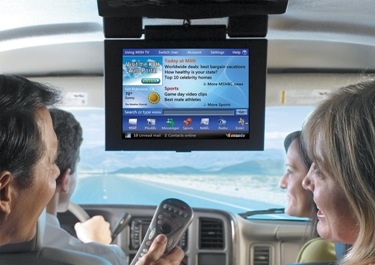The Connected Home: No One’s There – Radha Subramanyam

For years there have been predictions that American homes would become smarter thanks to Internet-connected and controlled devices from kitchen appliances, lighting and TVs to thermostats and smoke detectors. This vision may finally be coming true. Setting aside the question of whether we really need web-connected refrigerators, it’s no surprise that this development fascinates so many of us.
January’s Consumer Electronics Show (CES) was buzzing about a number of these devices, along with digital services to manage them. While not yet mainstream, the “connected home” has clearly crossed a major threshold after years of anticipation. Need more proof? How about Google’s $3.2 billionagreement to buy home automation startup Nest? Our homes and the way we interact with them are being re-imagined.
So at first glance, there’s never been a better time to stay inside, right? And considering the recent weather, who would blame you?
But the numbers tell a very different story. In reality, Americans spend 70 percent of their waking hours outside of their homes, according to a 2013 Outdoor Advertising Association study. We also spend 31 percent more time in our cars than we did just 10 years ago, according to separate 2013 Posterscope research.
Our homes may be better connected than ever but clearly so are we -- and, increasingly, so is the world around us. All of this translates to less of a need or desire to be home, which has significant implications for brands, advertisers and media companies.
Advertisers’ eyes are opening to the reality that consumers are no longer just relevant while at home in front of the TV. We are just as accessible to marketers while driving to work, listening to the radio in our office, riding on the train, waiting for a bus or walking down the street as we are while at home on the couch.
Smart phones have made it easier than ever to be on-the-go while sacrificing very little of the connectivity that we’d expect in our living room or office. But it’s not just smart phones that are increasing marketers’ ability to reach consumers outside the home. The physical world around us is coming online and contributing to this expanded access.
The growing popularity of “wearables” (another source of buzz at this year’s CES) like Pebble and Samsung’s Galaxy Gear, along with the rise of technologies like Apple’s iBeacon (which tracks shoppers’ movements around retail stores via Bluetooth) shows us that it’s going to get even easier to reach consumers on the move. Meanwhile, as the amount of time we spend behind the wheel has grown, our dashboards have shape-shifted to more closely mimic the connectivity and entertainment value historically confined to our living rooms and offices.
Again, these are paradigm shifts that have huge, and in my view, positive implications for marketers and media companies. But it’s not enough to notice that it’s happening. To really be on the winning side of this new reality, you have to understand how media -- and, consequently, advertising -- consumption is changing at the consumer level.
And it puts a tremendous onus on marketers and media companies to really mix and integrate their advertising buys, so that the consumer is seamlessly “handed off” from one medium to the next -- from the couch to the car to the office. The combinations are almost endless, the opportunities enormous, the media as varied as the people utilizing and viewing them.
Even though traditional media consumption is still strong (for example, the reach of radio -- the original mobile media -- has actually increased over the last decade, up to 245 million listeners weekly), gone is the day when advertisers were left longing for consumers to get home from work, eat dinner and retreat to the living room for a few hours of uninterrupted reachability in front of the TV. Mobile devices are with you all the time, music and talk reach you throughout the day and billboards and bus shelters can interact with you. The spread of broadband Internet access blurred boundaries of space and time for radio and TV. We’re now seeing the third wave -- the total reimagining of the living room as a space that surrounds us wherever we go. It is not about the connected home, but the connected consumer.
Radha Subramanyam is a seasoned media and entertainment executive with a significant track record as a leader in Media Research and Consumer Insights. She is one of the few individuals in Media who has worked in TV, digital, radio and social media. Her experience in these various media forms spans the Programming, Marketing and Advertising Sales aspects of the business. She is a visible speaker at events around the country and the world. Radha can be reached at radhasubramanyam@clearchannel.com. Read all Clear Channel's MediaBizBloggers commentaries at Clear Channel.
record as a leader in Media Research and Consumer Insights. She is one of the few individuals in Media who has worked in TV, digital, radio and social media. Her experience in these various media forms spans the Programming, Marketing and Advertising Sales aspects of the business. She is a visible speaker at events around the country and the world. Radha can be reached at radhasubramanyam@clearchannel.com. Read all Clear Channel's MediaBizBloggers commentaries at Clear Channel.
Check us out on Facebook at MediaBizBloggers.com
Follow our Twitter updates at @MediaBizBlogger
The opinions and points of view expressed in this commentary are exclusively the views of the author and do not necessarily represent the views of MediaBizBloggers.com management or associated bloggers. MediaBizBloggers is an open thought leadership platform and readers may share their comments and opinions in response to all commentaries.


